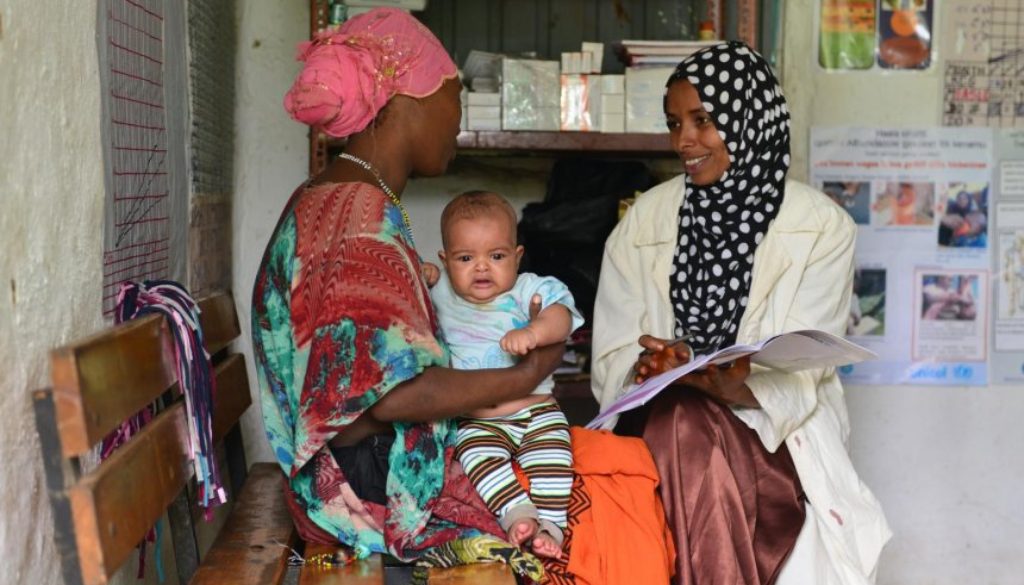Improving the quality of services provided by community health workers
Why Community Health Workers?
Across the globe, community health workers (CHWs) deployed in a variety of different roles and contexts (village health workers, community volunteers, lay counsellors, home-based care givers, etc.) have contributed substantial health benefits for community members, including mothers and children. In sub-Saharan Africa, CHWs have been an important strategy to address the severe shortages of skilled health workers, particularly for the poorest and most vulnerable populations.
Appropriately trained CHWs have the potential to address barriers to preventive and curative care, to bring care closer to communities, and provide accessible, appropriate services at household level. However, if community-based services are to be effective, it is important that CHWs receive appropriate support that spans training to supervision. The design of community-based programmes should include sustainable approaches that develop and maintain high quality performance by CHWs for the households and communities they serve.
Using Quality Improvement methods with CHWs
Quality Improvement (QI) approaches have been successfully implemented in low to middle income countries to improve the delivery of care at facility level. Increasingly, efforts have demonstrated that QI methods can be adapted to community settings to strengthen coverage, quality of care and retention in care for HIV and maternal and child health. A number of projects are trialing and testing different approaches to QI to better understand what works under what circumstances and how improvements in quality can be sustained over the longer term.
One key example is the USAID SQALE project. Building on the work of REACHOUT a community systems strengthening project, the USAID SQALE project is seeking to embed and study the implementation of QI at the community level in Kenya. As a first step, lack of supervision of CHWs was identified as a major barrier affecting quality of services and motivation. Subsequently, supervisors have been trained on how to conduct peer to peer and group supervision and provided with tools to facilitate the process.
Putting it all into action
In Kenya, there was an increased number of group supervision sessions compared to when the project begun and importantly, community health volunteers reported improvement in quality of supervision from fault finding to supportive and beneficial. When it comes to embedding these successes more broadly, community health volunteers (CHVs) led by a community health extension workers (CHEW) will be grouped into work improvement teams and trained on QI to enable them develop and review QI plans during their monthly supervision sessions.
The CHEWs from different work improvement teams will form a sub-county QI team led by their supervisor at the sub-county level. This team will also meet monthly to review reports and feedback from work improvement teams, prioritize problems and develop strategies and action plans for addressing those problems using QI approaches. Continuous mentorship will be provided by program staff and eventually transitioned to Ministry of Health staff responsible for community health programs similar to other QI programs. USAID SQALE will improve community data quality, measure maternal, newborn and child health outcomes. This is all as a result of the community QI approach.
Bringing QI and CHWs together
Health Systems Global has Thematic Working Groups (TWGs) that are looking at both QI and CHWs. There is a clear affinity between these TWGs, as they want to expand the conversation that goes beyond looking at how facilities can improve, and share the evidence for QI approaches at the community level.
—
Please do get in touch with us if you have learning to share and we look forward to engaging with you in the future.
Image credit: UNICEF Ethiopia, Creative Commons license 2.0

